The Impact of Jazz Radio on Los Angeles Culture
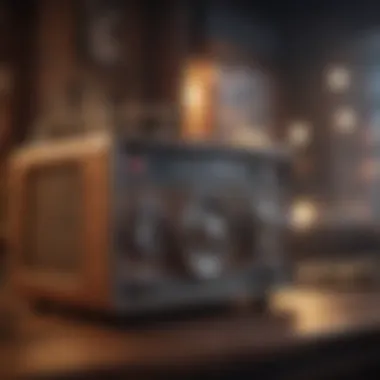
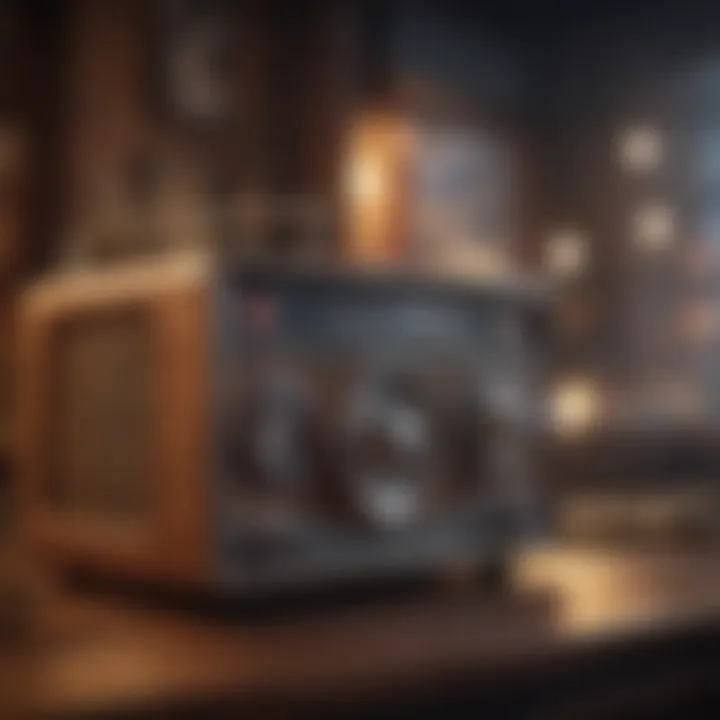
Intro
Jazz radio has a rich legacy in Los Angeles, a city known for its eclectic music scene and cultural diversity. From smoky clubs in the 1930s to today’s digital streams, jazz stations have played a crucial role in educating, engaging, and entertaining both die-hard fans and curious newcomers. As we peel back the layers of the subject, we’ll explore the historical roots of jazz radio, its current ecosystem, and the cultural relevance it holds today. This journey will shine light on how jazz radio has evolved, shaped listener experiences, and fostered community connections around this vibrant art form.
Historical Development of Jazz Radio
Jazz radio in Los Angeles began way back in the 1920s with small stations hosting live broadcasts of big bands and small jazz ensembles. As the genre grew in popularity, so did the number of stations dedicated to it. Key players from that era like KGFJ or KPCC laid the groundwork, providing a platform for an emerging wave of musicians and styles. Over the decades, jazz radio endured ups and downs, fighting against the rise of television and changing musical tastes while retaining its fundamental role of promoting artists and educating audiences.
Current Landscape
Today, the jazz radio scene is as diverse as the city itself. Traditional broadcasts coexist with innovative digital platforms that reach global audiences. Stations like KJazz 88.1 FM continue to play a pivotal role, curating playlists that showcase both classic and contemporary jazz artists. Online avenues such as streaming services have also changed the game, allowing listeners to explore curated jazz playlists from anywhere in the world. This democratization of access is especially significant, considering how jazz is a fluid, ever-evolving genre that thrives on exploration and experimentation.
Cultural Impact
The cultural impact of jazz radio is profound, touching not only local life in Los Angeles but also influencing global music trends. Jazz radio serves as a cultural bridge, connecting listeners with the rich heritage of this genre while promoting up-and-coming artists. Its significance extends beyond mere entertainment; it caters to a community of learners and aficionados who appreciate the depth and nuances jazz has to offer. In this way, jazz radio has asserted itself as a vital space for artistic expression, fostering creativity and encouraging lively discussion about music.
"Jazz is a way of life. It embodies the very essence of freedom and artistry."
Audience Engagement and Programming Trends
A deep dive into audience engagement reveals that listeners are increasingly drawn to unique programming that mirrors their tastes and interests. Stations are not only reacting to follower requests but are also experimenting with themed shows, interviews, and live recordings from local performances. This type of dynamic programming enriches the environment, making it a living entity rather than just a sound apparatus stuck in time. The jazz community thrives on this interaction, which nurtures a sense of belonging among listeners.
Future of Jazz Radio
Looking forward, the future of jazz radio seems promising yet challenging. There exists the ongoing struggle between tradition and innovation. While digital platforms grow, traditional stations must adapt to remain relevant. Listening habits change; therefore, stations are exploring ways to engage younger audiences, like incorporating social media interactions or presenting local jazz festivals via live stream. These shifts aim to harness the legacy of jazz while ensuring its survival in a constantly shifting musical landscape.
In sum, the journey through jazz radio in Los Angeles reveals much about not only the music itself but also its capacity to unite communities, inspire creativity, and resonate beyond geographical boundaries. As we proceed through this exploration, each section will unfold further insights into the key figures, influences, and current trends shaping this vibrant soundscape.
Intro to Jazz Radio
Jazz radio occupies a unique niche within the broader spectrum of music broadcasting. It serves not only as a platform for the vibrant sounds of jazz but also as a cultural touchstone for communities that hold this genre dear. The significance of jazz radio extends far beyond simply playing records; it offers a window into the lives of jazz musicians, fostering connections within a community that celebrates artistic expression. The rhythms, improvisations, and storied history of jazz unfold through the airwaves, making the subject of jazz radio crucial for both enthusiasts and aspiring musicians alike.
The Origin of Jazz Radio
The journey of jazz radio began in the early twentieth century, as the genre itself was gaining traction in American society. The 1920s, often referred to as the Jazz Age, marked the initial foray into broadcasting jazz music. Stations like WJZ in New York and KDKA in Pittsburgh were among the first to air jazz programs, captivating listeners with the invigorating sounds of Duke Ellington, Louis Armstrong, and other icons.
In those early years, the format was quite simple, yet effective. Live performances from clubs and dance halls were broadcast, allowing audiences to experience the energy of the jazz scene from their homes. These broadcasts were something of a revelation, bringing a new form of entertainment and culture to the masses. The spontaneity inherent in jazz was perfectly suited for the live format, blurring the lines between performance and listener.
Role of Jazz Radio in American Music
The role of jazz radio in American music cannot be overstated. It has been a catalyst for not just fostering appreciation for jazz, but also for elevating it within the music industry's hierarchy. Historically, radio stations played a pivotal role in popularizing artists who were on the fringes of mainstream recognition.
For instance, during the bebop revolution in the 1940s and 1950s, shows featuring innovators like Charlie Parker and Dizzy Gillespie introduced audiences to more complex forms of jazz. It was in these moments that jazz radio became a battleground for different musical styles, shaping the tastes of listeners who began demanding more than what the mainstream could offer.
Key Contributions of Jazz Radio:
- Discovery of Talent: Radio stations often acted as stepping stones for emerging artists. Local talent could find national exposure through airplay.
- Cultural Exchange: Jazz radio facilitated the exchange of musical ideas across regions, helping to blend different jazz styles from North, South, East, and West.
- Community Building: Programs often catered to specific communities and demographics, creating a shared space for listeners to foster a collective appreciation for jazz.
"Jazz radio represents more than melodies and rhythms; it's the embodiment of cultural legacy and shared experience."
Through these mechanisms, jazz radio has significantly influenced the trajectory of American music. Its evolution reflects the changing tastes of listeners, adapting to the times while steadfastly preserving the core values of jazz. As we look further into the history of jazz radio in Los Angeles, it's essential to recognize that this rich tradition continues to inspire and connect listeners in profound ways.
History of Jazz Radio in Los Angeles
Jazz radio in Los Angeles has roots that run deep, intertwined with the city’s cultural evolution. Understanding this history is crucial, as it not only provides context but also illuminates how the genre has shaped and been shaped by the broader musical landscape. The journey of jazz radio in this vibrant hub highlights pioneering efforts and changing trends that have left an indelible mark on music lovers and artists alike.
Early Beginnings and Pioneering Stations
The beginnings of jazz radio in Los Angeles can be traced back to the 1920s, a time when the genre was starting to gain traction. As jazz clubs proliferated throughout the city, radio stations began to recognize the growing audience eager for this fresh new sound.
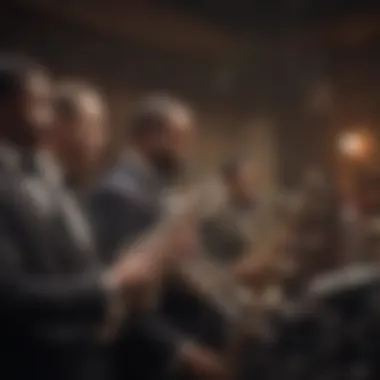
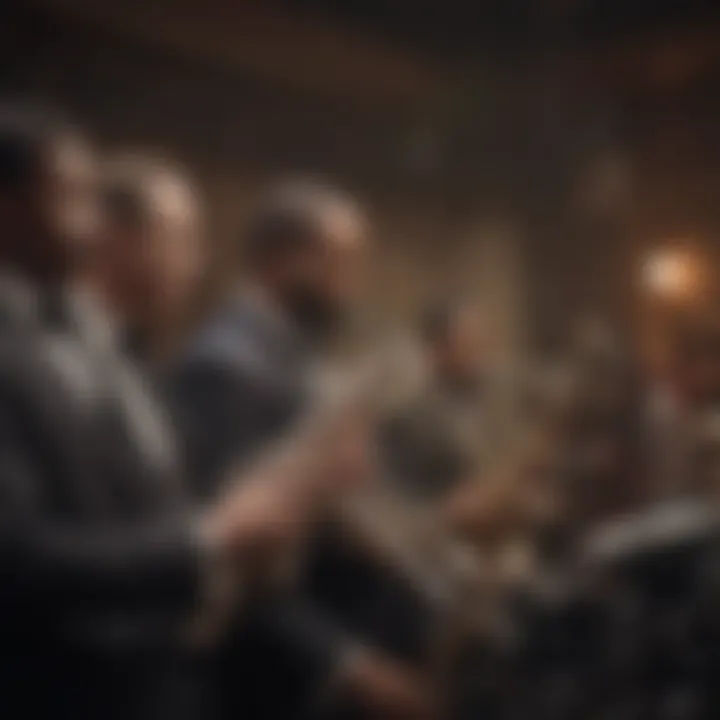
One of the earliest and notable stations was KFWB, which has been a cornerstone in promoting jazz. KFWB began broadcasting in 1922 as a small station, but its commitment to jazz helped it flourish amidst the competition. This station was crucial for many local artists, giving them the opportunity to share their music with a much larger audience.
Alongside KFWB, another pioneering entity was KLAC, embarking on a journey through the airwaves with a keen focus on jazz programming. These early broadcasts often introduced listeners to national jazz trends alongside localized sounds; it was a blend that resonated well with audiences from diverse backgrounds. The influence of these radio stations laid the groundwork not only for jazz but also for the wider acceptance of various musical styles in Los Angeles.
Impact of the Swing Era
The Swing Era, spanning the 1930s and early 1940s, was a pivotal moment for jazz radio in Los Angeles, bringing not just musical innovation but also a surge of popularity that shaped the era’s cultural fabric. During this time, the beats of big bands and swing music started booming not only in clubs but also across radio. Stations like KJAZ shifted their programming to align with this trend, featuring live broadcasts from prominent dance halls such as the Palladium.
This massive leap wasn’t merely about numbers; it was about communities. Jazz radio became a communal experience, where families gathered around their radios to revel in the latest tunes. The show The Dodge Victory Hour, for example, showcased big names such as Benny Goodman and Duke Ellington, solidifying the role of radio in popularizing these artists.
"In an era where the nation was searching for identity, jazz became a voice—an expression of freedom, resilience, and creativity."
The radio stations' ability to adapt to the changing musical environment fostered a sense of belonging among jazz enthusiasts. They acted as a bridge, connecting the hearts of Angelinos with the soulful rhythms and improvisations of jazz, bringing the music from the clubs into their living rooms.
This historical narrative is not just about music; it serves as a testament to how jazz radio helped create a cultural identity, weaving together diverse communities through the universal language of rhythm and melody. The impact of the Swing Era continues to echo through subsequent generations of jazz programming, shaping what we recognize as the landscape of jazz radio in Los Angeles today.
Current Landscape of Jazz Radio Stations
The jazz radio scene in Los Angeles is a crucial element in both preserving and promoting the genre. Jazz radio does not just serve as a platform for broadcasting; it acts as a bridge connecting different generations of musicians and listeners. The essence of jazz thrives on its ability to adapt, and radio stations are at the forefront of this evolution. Stations provide a diverse range of programming that caters to every jazz aficionado's palate, making it imperative to understand how they operate in today’s digital age.
Overview of Prominent Stations
In Los Angeles, several radio stations stand out, creating unique spaces for jazz within the broader musical framework. Some of the most notable include:
- KJAZZ 88.1 FM: Known for its eclectic mix of traditional and contemporary jazz, KJAZZ has been a staple for over three decades. It features not just music but also discussions and interviews with prominent artists.
- KCRW: A leader in promoting diverse music genres, KCRW broadcasts jazz as a part of its expansive programming. The station is renowned for introducing underground and emerging artists to their audiences.
- KLON 88.1 FM: Focusing heavily on smooth jazz, KLON attracts a different demographic. Its smooth sounds appeal to listeners looking for a more laid-back vibe.
These stations do not solely rely on music to engage listeners; many have also adopted community-centered events and promotions to boost listener interaction.
Formats and Programming Strategies
The formats and programming strategies implemented by these stations vary widely, each influencing how jazz is consumed. They can be broken down into a few key approaches:
- Live Broadcasts and Interviews: Offering live broadcasts of performances and interviews with musicians can create a more immersive experience for listeners. This strategy helps to humanize the artists behind the music, giving listeners a taste of the artist's creative journey.
- Themed Programming: Some stations feature themed nights focused on specific artists, styles, or eras. For example, a night might be dedicated to the works of Miles Davis or to the rich history of bebop.
- Audience Participation: Engaging audiences through social media platforms like Facebook or Reddit allows stations to foster a community. Polls and listener requests help in tailoring playlists to fit listener preferences.
"Jazz radio is about giving life to the music. It’s more than just the tracks played; it’s the soul of the community and its stories."
Prominent DJs and Personalities
The world of jazz radio is not just about the music; it’s also significantly shaped by the voices that bring it to life. DJs and personalities play an essential role in curating experiences and spreading the love for jazz across Los Angeles. Their knowledge, passion, and unique styles greatly influence how audiences connect with the genre. From introducing lesser-known artists to diving into the stories behind classic records, these figures become guides through the intricate landscape of jazz music.
Influential Figures in Los Angeles Jazz Radio
In Los Angeles, several DJs have left indelible marks on the jazz scene. Notably, the likes of Arturo Sandoval and Valerie Johnson have established themselves as icons. Arturo, with his vibrant personality, doesn’t just play tunes; he crafts a narrative that strengthens the listener's bond with the performances.
Valerie Johnson, on the other hand, is known for her lush storytelling and deep insight into jazz’s cultural significance. Her shows often spotlight local talents, showcasing hidden gems that may otherwise slip through the cracks. It's not merely broadcast; it's a well-mixed tape of education, passion, and enthusiasm.
The influence of these personalities extends beyond the airwaves. They often host community events, engaging with their listeners face-to-face, which fosters a tighter jazz community and keeps the genre relevant in such a diverse city.
The Art of Jazz Broadcasting
The skill of jazz broadcasting transcends simply selecting the right tracks. It’s an art form in itself. A proficient DJ knows how to create an atmosphere, whether it's a cozy, late-night vibe or a lively Saturday afternoon groove. Here are some key aspects of jazz broadcasting:
- Creating a Narrative: Effective DJs don’t just play music; they weave stories around the tracks. This narrative makes each listening session a journey.
- Engagement with Listeners: Personalized shout-outs or sharing anecdotes about the artists deepen connection. Listeners feel valued and part of a community.
- Curating Playlists: The curation of playlists requires a keen eye for harmonizing sounds in ways that are both surprising and enjoyable. Each selection can evoke various emotions or transport listeners to different places.
"Jazz is an emotion, a thought, and sometimes a way of life. It’s the responsibility of the broadcaster to communicate this narrative and make it resonate with every listener."
Cultural Impact of Jazz Radio
Jazz radio in Los Angeles is not just a medium for music; it’s a vibrant cultural thread woven into the fabric of the community. The significance of this art form extends beyond airwaves; it connects people, promotes local talent, and fosters a genuine appreciation for jazz as an evolving genre. In a city as diverse as Los Angeles, jazz radio serves as a vital touchpoint for various cultures, offering listeners a chance to engage with a rich musical heritage that reflects both historical and contemporary influences.
Connecting Communities Through Jazz


Jazz radio has an uncanny ability to bring disparate groups together. It acts as a gathering place for listeners of all ages and backgrounds. In Los Angeles, a metropolis pulsing with energy and artistic expression, stations like KJAZZ and KKJZ broadcast more than just tunes; they offer a platform for reflection, discussion, and camaraderie among jazz aficionados.
When a broadcast highlights a local artist or a particular jazz event, it often ignites a newfound interest in the genre among its listeners. People gather around the radio or tune in via their smartphones, creating a shared experience even when apart. Listeners feel a sense of belonging, contributing to a growing community that celebrates both local and global jazz influences. This interactive nature fosters discussions about various styles, such as hard bop or cool jazz, and opens doors to collaborations that might not occur in other spaces.
"Jazz is the music of the people; it speaks a language that everyone can understand, making it a powerful connector in heated times."
With interactive listener requests and dedications, jazz radio allows fans to get involved. Some stations even host live events where audiences can engage directly with musicians, bridging the gap between artists and listeners. This participatory approach strengthens community ties, as gatherings often lead to friendships formed over shared musical tastes. Moreover, these stations become vital in promoting inclusivity, showcasing artists from underrepresented backgrounds, which enriches the musical dialogue.
Jazz Radio and the Local Music Scene
The heartbeat of any city's music scene is often reflected in its local radio stations, and Los Angeles is no exception. Here, jazz radio plays a significant role in nurturing the local music ecosystem. By supporting up-and-coming artists and promoting live performances, these stations act as a springboard for talent that might otherwise remain under the radar.
For many local artists, airplay on jazz stations can provide the push they need to gain recognition and grow their audiences. Stations like KCRW have been known for their eclectic programming, giving platform to a myriad of voices, styles, and innovations within the jazz tradition. The great thing is that listeners can often discover their next favorite artist before they hit the big time.
Additionally, jazz radio facilitates collaborations among musicians. When artists are featured on a popular show or podcast, it’s not uncommon for them to connect and create something fresh, often combining different styles and influences. This cross-pollination leads to a richer local scene, where innovation thrives and pushes the boundaries of what jazz can be.
Local stations often engage in community-related activities too; think workshops, open jam sessions, or documentary screenings about jazz legends. These events serve not only to educate but also to stir up excitement around the genre, spearheading a new wave of interest from younger generations. When the community invests in its local jazz scene, the cultural impact multiplies, ensuring the music continues to resonate for years to come.
Digital Transformation in Jazz Radio
The landscape of jazz radio has undergone a significant metamorphosis with the rise of digital technology. This evolution not only reflects a shift in how content is consumed but also reshapes the ways in which artists and enthusiasts engage with this rich genre. Understanding the digital transformation of jazz radio is essential for grasping its current dynamics and future potential.
The Shift to Online Platforms
With the onset of the internet, terrestrial broadcasting faced a formidable contender. Online platforms have democratized access to jazz content. Listeners no longer rely solely on local stations that may have limited programming. Instead, they can now tap into a worldwide selection of jazz broadcasts at their fingertips. Here are some key aspects of this shift:
- Accessibility: Jazz lovers can tune in from anywhere. Whether it's someone in Tokyo relishing a Los Angeles jazz evening or a local enthusiast discovering a classic vinyl track digitized from a New Orleans station, geographical barriers have all but vanished.
- Diverse Programming: Online platforms often cater to niche audiences, offering everything from avant-garde experimental jazz to classic swing. This variety meets the tastes of listeners that might feel overlooked by mainstream radio.
- Interactive Features: Unlike traditional radio, online platforms frequently incorporate features like live chat, where listeners can share their thoughts in real-time, creating a shared experience among fans.
Such accessibility fosters an enriched community of listeners who interact more with not just the music but also with each other.
Podcasting and Streaming Services
Another critical component of digital transformation is the rise of podcasting and streaming services dedicated to jazz music. These formats serve not only as new avenues for enjoyment but also as educational resources. Some notable elements include:
- Curated Content: Podcasts often feature curated playlists and discussions around particular themes. For example, "Jazz at the Lounge" dives deep into the history of iconic tracks, while "Jazz Discoveries" highlights emerging musicians that jazz aficionados might not have heard about yet.
- On-Demand Listening: Services like Spotify and Apple Music allow users to create personalized playlists from an expansive catalog of jazz records. They offer flexibility to listen anytime, anywhere, accommodating diverse lifestyles.
- Documentary-Style Programming: Many podcasts incorporate storytelling, exploring the lives of influential jazz artists or the evolution of jazz styles. This format adds depth to what might be a passive listening experience, transforming it into an engaging exploration of the music and its roots.
Jazz radio has reinvented itself through digital platforms, evolving from a linear experience to one that is dynamic and tailored to the needs of today's audience.
In summary, the digital transformation in jazz radio has opened new doors for listeners and creators alike. By leveraging online platforms, podcasting, and streaming services, jazz radio continues to thrive and reach a globally connected audience.
This evolution not only promises innovative formats but also ensures a continued appreciation for the genre in an ever-changing media landscape.
Audience Engagement in the Jazz Community
Understanding audience engagement in the jazz community is crucial for the sustainability and evolution of jazz radio in Los Angeles. Jazz isn’t just about the music; it’s about the stories, the emotions, and the connections it fosters. Engaging listeners allows stations to cultivate a dedicated follower base and create a vibrant musical dialogue. This interaction enriches the listener experience while serving the broader cultural fabric. By examining demographics and fostering interactive programming, jazz radio can better serve its audience and support local artists.
Listener Demographics and Preferences
In Los Angeles, the demographic profile of jazz listeners is as diverse as the city itself. From seasoned connoisseurs with a penchant for classic records, like those from Miles Davis or Ella Fitzgerald, to younger audiences discovering the genre through modern interpretations, understanding these preferences is fundamental. A few key points can shine a light on this diversity:
- Age Groups: Traditional jazz fans are often older, but there’s a growing number of younger listeners attracted by contemporary artists who blend jazz with hip hop or electronic music. Programs that highlight this fusion can tap into this emerging audience.
- Cultural Backgrounds: Jazz has a rich history rooted in African American culture, and today, it resonates across various cultures and communities. Each cultural group brings its unique influences into jazz radio, further enriching the content and outreach.
- Listening Habits: Preferences lean towards a blend of classic tracks and innovative new pieces. Many listeners appreciate when stations program live performances or interviews with local artists, offering insights behind the music.
By knowing the audience, jazz radio stations can tailor their programming to better fit listener desires, making the experience more personal and resonant, creating a more committed listener base.
Interactive Programming and Listener Impact
Interactive programming is a pivotal aspect of jazz radio that not only attracts but also retains listeners. When stations engage their audiences, it creates a two-way street where feedback enriches the overall quality of content.
For instance, many stations implement the following methods to craft interactive experiences:
- Listener Requests: Allowing audiences to request songs or vote on upcoming playlists fosters a sense of ownership among listeners. KCRW in Los Angeles has been particularly effective with this technique, often reaching out via social media to involve listeners in their programming choices.
- Live Shows and Events: Hosting live shows or community events not only showcases local talent but also gives listeners an opportunity to connect with the artists and station personnel. These interactions can leave lasting impressions and strengthen community ties.
- Social Media Engagement: Jazz stations utilizing platforms like Facebook or Reddit can create buzz around new artists and share insightful interviews or behind-the-scenes looks at upcoming shows. This strategy not only engages existing fans but also attracts new listeners, expanding the jazz community.
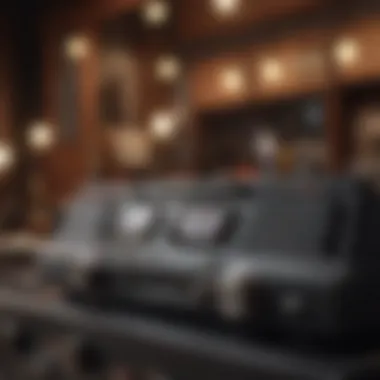
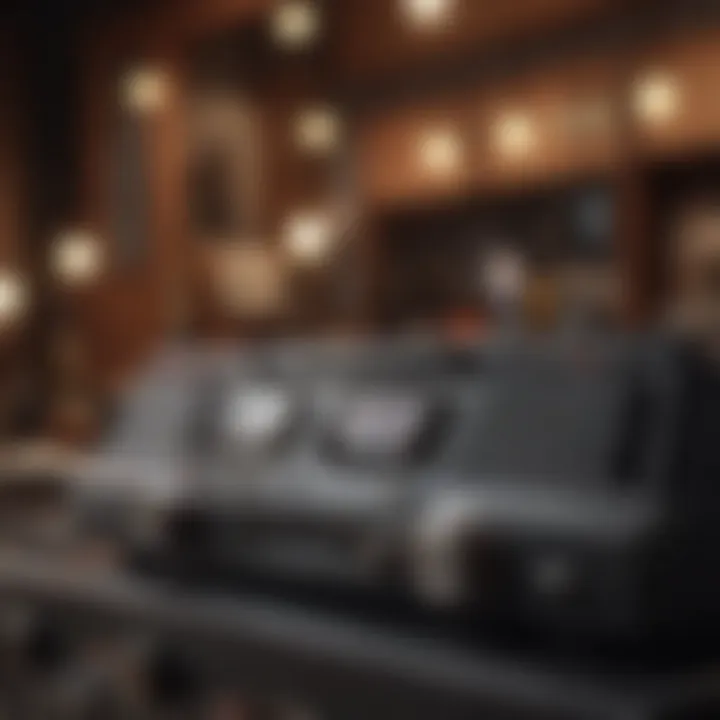
By fostering an interactive atmosphere, jazz radio can deeply influence both the audience and the artists, cultivating a rich environment for musical exploration and discovery.
As jazz radio continues to navigate the evolving landscape of music consumption, understanding and implementing effective strategies for audience engagement is essential.
Conclusion: Audience engagement is not merely a nice-to-have; it’s a necessary strategy for jazz radio stations in Los Angeles to thrive. By tapping into listener demographics and employing interactive programming, stations can create vibrant communities, ensuring that jazz remains a dynamic part of the city's cultural landscape.
Challenges Facing Jazz Radio Today
The landscape of jazz radio in Los Angeles is not just shaped by its rich heritage but also by modern challenges that threaten its viability. As we journey through the ever-evolving music ecosystem, we see that staying relevant is crucial for jazz radio stations to thrive. The importance of addressing these challenges cannot be overstated; they reflect the delicate balance between tradition and innovation in a city renowned for its diversity in music.
Without a doubt, these challenges impact listeners as well, influencing their access to jazz and, ultimately, diminishing its presence.
Competition from Other Genres
Jazz radio faces stiff competition from a myriad of genres that dominate the airwaves today. From hip-hop to electronic, the musical realm has expanded exponentially, overshadowing jazz, which, though rich in history, struggles to capture the attention of younger audiences.
- Shifting Tastes: Many listeners gravitate towards genres that align with current trends. The rhythmic allure of pop or the engaging beats of hip-hop hold a strong appeal for many, particularly the youth, often leaving jazz on the back burner.
- Streaming Services: The rise of platforms like Spotify and Apple Music allows for personalized playlists that cater to immediate listener preferences, making it harder for traditional stations to draw in audiences with more static programming. These services are often seen as more convenient, further pulling listeners away from local jazz broadcasts.
- Cultural Relevance: While jazz's improvisational roots are undeniable, many newer musicians innovate within genres that might connect better with mainstream culture, making their tunes more relatable and shareable among social circles.
"In rough waters, it’s the adaptable that survive."
Funding and Sustainability Issues
Funding issues loom large over jazz radio stations, a reality that is increasingly hard to ignore. Many stations rely heavily on grants, donations, and sponsorships, which can oscillate greatly depending on economic conditions.
- Declining Sponsorships: With businesses shifting their marketing dollars towards digital platforms, traditional radio stations find themselves struggling to secure advertising revenue. Smaller, local businesses that previously supported community radio might also hesitate to invest, especially in a competitive digital ad landscape.
- Operational Costs: When you consider overhead costs, including upkeep of equipment and necessary staffing, it becomes clear that sustained financial support is crucial for the continued operation of jazz stations. Without revitalization efforts, many stations risk scaling back their programming.
- Crowdfunded Solutions: Creatively, some stations have turned to crowdfunding to cover their operational costs. While this can yield short-term relief, it's not a sustainable long-term strategy. Building a loyal listener base willing to financially support jazz radio is necessary for nurturing future generations of jazz enthusiasts.
The path forward for jazz radio lies in recognizing these challenges and adapting accordingly, finding ways to resonate with a broader audience while remaining true to the rich tradition it embodies. By embracing community involvement and exploring innovative funding avenues, the future of jazz radio in Los Angeles has the potential to remain vibrant and impactful.
The Future of Jazz Radio in Los Angeles
As we stare down the road ahead, it’s clear that the future of jazz radio in Los Angeles is a balancing act of tradition and innovation. It’s where the old masters meet the new wave, embodying the creative spirit that jazz has always nurtured. Understanding where jazz radio heads from here involves not only considering emerging trends but also recognizing the deep roots that anchor it firmly in the city’s culture.
Trends and Innovations
Jazz radio isn’t sitting on its laurels; it’s evolving like an improvisational solo. The digital era has ushered in a plethora of advancements, all aimed at enhancing listener experience. One prime trend is the widespread adoption of streaming. Stations like KJAZZ 88.1, which has always prioritized live broadcasts, are now complementing their offerings with online streaming. This enables listeners from across the globe to engage with the music of Los Angeles, completely reshaping the audience demographic.
Moreover, podcasting has become a significant player in the scene. Shows focused on artists’ interviews, historical explorations, and even thematic playlists are popping up in numbers. This format allows for deeper connections, making jazz more accessible. It’s a chance to dive into niche topics—like the evolution of jazz styles or the influence of certain composers—which can be exhilarating for both seasoned aficionados and uninitiated newcomers.
A further layer to this transformation is the integration of social media as a promotional tool. Stations increasingly utilize platforms like Facebook and Reddit to engage listeners, share content, and build community. They enable real-time feedback and discussions, turning ordinary listeners into active participants of the jazz dialogue. This shift from passive listening to interactive engagement is reshaping how jazz is experienced.
"The medium is the message," Marshall McLuhan famously said. In the context of jazz radio, this emphasizes the idea that the platforms we choose to consume music shape our relationship with it.
Preserving Jazz Heritage
While strides towards the digital future are vital, it’s equally important to hold onto the rich heritage of jazz. The essence of Los Angeles jazz radio lies deeply embedded within the historical narratives and cultural significance it carries. Many stations are making concerted efforts to preserve jazz heritage through special programming that highlights the greats of the past, such as John Coltrane and Ella Fitzgerald.
Creating archival programs ensures that younger audiences can listen to and learn about these legends. Initiatives like community events and collaborations with local schools often pop up, aiming to nurture the next generation of musicians. By encouraging youth participation in workshops and performances, the stations ensure that jazz does not just linger in history but lives and breathes through new talent.
In addition, documentaries and live performances broadcasted on air serve to educate listeners. They delve into not only the music but the context behind it—political issues, cultural movements, and community stories. Jazz is not just about sound; it's about environment, experiences, and identity. Keeping these themes alive fosters an appreciation that transcends mere listening.
As we look to the horizon, Los Angeles jazz radio stands at a pivotal junction. The possibilities fork in many directions, each promising to enrich the landscape of both the music genre and the broader community. The future isn't just a question of technology or preservation, but how harmoniously we can blend the two.
Culmination
The significance of jazz radio in Los Angeles cannot be overstated. Throughout this exploration, the narrative has revealed how jazz radio stations serve as essential pillars supporting the genre's vibrancy in a community known for its eclectic music culture. Jazz radio is not merely about playing tunes; it is a lifeline for artists, a platform for budding musicians, and a cultural repository for jazz enthusiasts.
Reflection on the Role of Jazz Radio
Reflecting on the intricate role of jazz radio, it becomes clear that this medium has crafted an environment where creativity can thrive. The major differences in programming strategies make each station unique, attracting diverse listener bases. Stations such as KJazz 88.1 and KKJZ carry the weight of history while embracing new trends, ensuring that the past is never forgotten and the future remains bright.
Jazz radio acts as a cultural connector, fostering community bonds through music. The engagement between DJs and listeners creates a space that encourages dialogue and appreciation for jazz beyond just the music. Listeners can partake in live concerts, participate in contests, or even request songs, making them feel like an integral part of the jazz scene.
Prominent figures in the industry often act as ambassadors, engaging with their audience in a way that transcends radio airwaves. These DJs do more than just introduce records; they actively participate in the culture they promote. Their stories and insights deepen the connection that listeners share with the music they love.
As we think about the future of jazz radio in Los Angeles, it’s evident that adaptability and innovation will play crucial roles. In a rapidly changing digital landscape, jazz radio must find effective ways to integrate technology while preserving its unique charm. The community’s investment in local talent and the genre’s authenticity should remain at the forefront, as these elements are what keep jazz alive and thriving.
In essence, jazz radio is much more than a genre; it is a movement that cultivates appreciation, broadens the audience, and celebrates the art form in its many manifestations. As it faces modern challenges and embraces new trends, its core mission to promote jazz culture in Los Angeles remains steadfast, ready for the upcoming waves of change.







